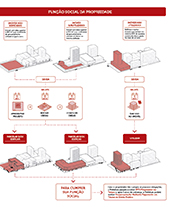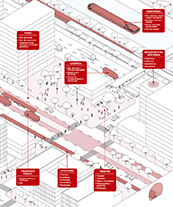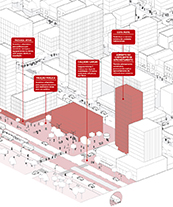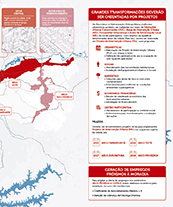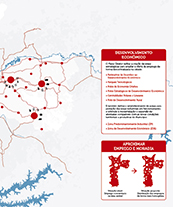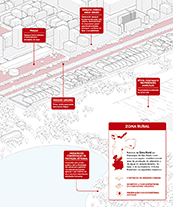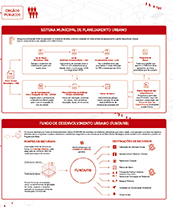Urban Management SP and the new Master Plan for São Paulo
The municipal administration needs the engagement of citizens to think about the changes required to build a better city.
Planning should be the result of a partnership between government and society. To this end, since April 2013, the Municipal Department of Urban Development (SMDU) from the City of São Paulo has developed the platform “Gestão Urbana SP” (“Urban Management SP”). This digital platform aims at increasing transparency and promoting innovative participatory processes in the development of urban policies.
The website provides access to presentations, documents and data in open format, rules and regulations, illustrated explanatory material, and other information regarding the ongoing projects and initiatives from SMDU and SP-Urbanismo.
Additionally, “Gestão Urbana SP” houses innovative participatory tools that support citizen participation in the revision of the legal framework for urban policy, such as the Participatory Draft Bill from the Master Plan and the Zoning Law, the Collaborative Map and digital proposal forms, as well as in the development of urban projects.
Most of the website is in Portuguese, but the platform will gradually be supplied with English content as well. Stay updated!
A new Master Plan for São Paulo
The city of São Paulo has a new Master Plan. Approved on June 30, 2014 and enacted on July 31 by Mayor Fernando Haddad, the new law (Law 16.050/14) has a number of guidelines for the city’s development and growth for the next 16 years.
Unprecedented participatory process
Together with public hearings, meetings and workshops that were part of the entire participatory process during the revision of the Master Plan, the Municipal Department of Urban Development (SMDU) launched the digital platform “Gestão Urbana” (“Urban Management”). In this website, all the information related to the participatory process, such as schedules, results, news and files, was gathered and made available in open format. In addition to allowing greater access to data, the “Gestão Urbana” platform provided innovative participatory tools, such as an online proposal form, a shared map and a collaborative draft bill, where any citizen could post specific comments and suggestions for each article.
The added numbers demonstrate that the participatory activities undertaken by both the executive and legislative branches exceeded in an unprecedented way the provisions established by law. Such process was, from the beginning, agreed with the civil society and the Municipal Council of Urban Policy (CMPU). In total, 114 public hearings were carried out, with the participation of 25,692 people, who gave 10,147 contributions for the improvement of the Master Plan. Also 5,684 proposals were made in meetings and workshops and other 4,463 suggestions were sent by digital tools, being 1,826 through online forms, 902 interventions on the shared map and 1,204 in the collaborative draft bill available on the “Gestão Urbana” website, as well as 531 proposals on the City Council’s website.
Understanding the Master Plan’s main goals
The main goal of the new Master Plan is to humanize and rebalance the city of São Paulo, bringing housing and jobs closer together and facing the socio-territorial inequalities. In order to achieve these goals, several strategies were defined: fighting vacant land, which doesn’t comply with its social function; implementing housing policies for those who need the most; incorporating the environmental agenda; improving urban mobility; guiding growth near public transportation; improving urban life in neighborhoods; promoting economic and social development; preserving the heritage and enhancing cultural initiatives; and strengthening public participation in the decisions about the future of the city.
Tools and purposes are linked in order to generate key transformations in the city. On the one hand, the definition of a specific “macro-area” for structuring the metropolitan region points to a strategic territory in São Paulo, where urban intervention projects will play a major role in driving spatial, social and economic transformations, requalifying public spaces and rebalancing the distribution of jobs. On the other hand, mixed-use buildings with active façades that bring life to the streets will have incentives especially near public transportation corridors or stations, to where the city’s growth and development is oriented through self-applying rules, optimizing urban land and allowing the preservation of residential neighborhoods in-between.
With its new Master Plan, São Paulo took an important step to ensure the desired transformations over the next 16 years toward a more human and balanced city.
To facilitate understanding, the municipal administration made a series of infographics that explain in a concise and dynamic way the Master Plan:
Download here the booklet with illustrated strategies of Master Plan for São Paulo
